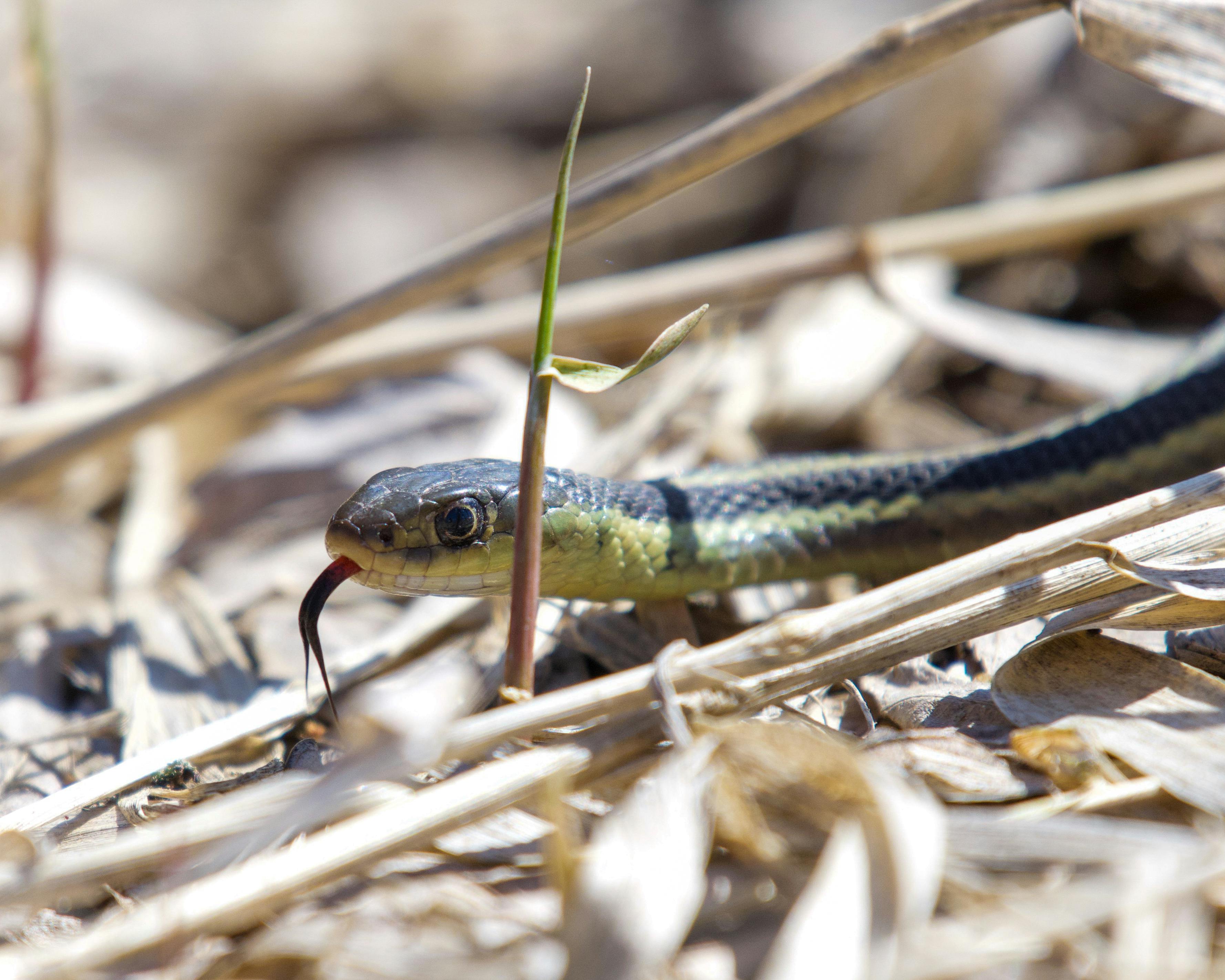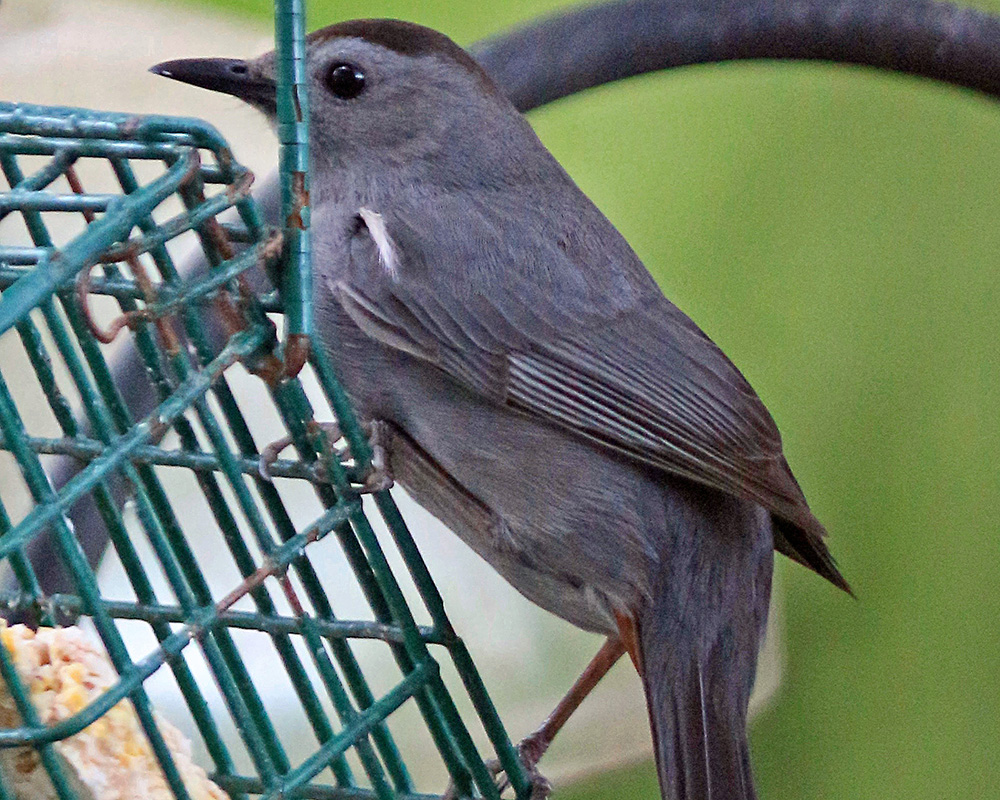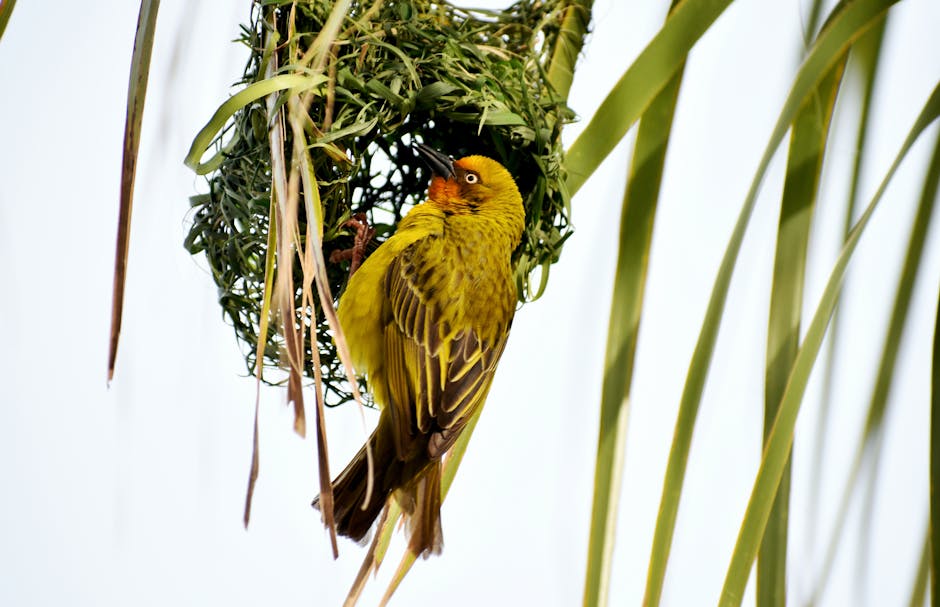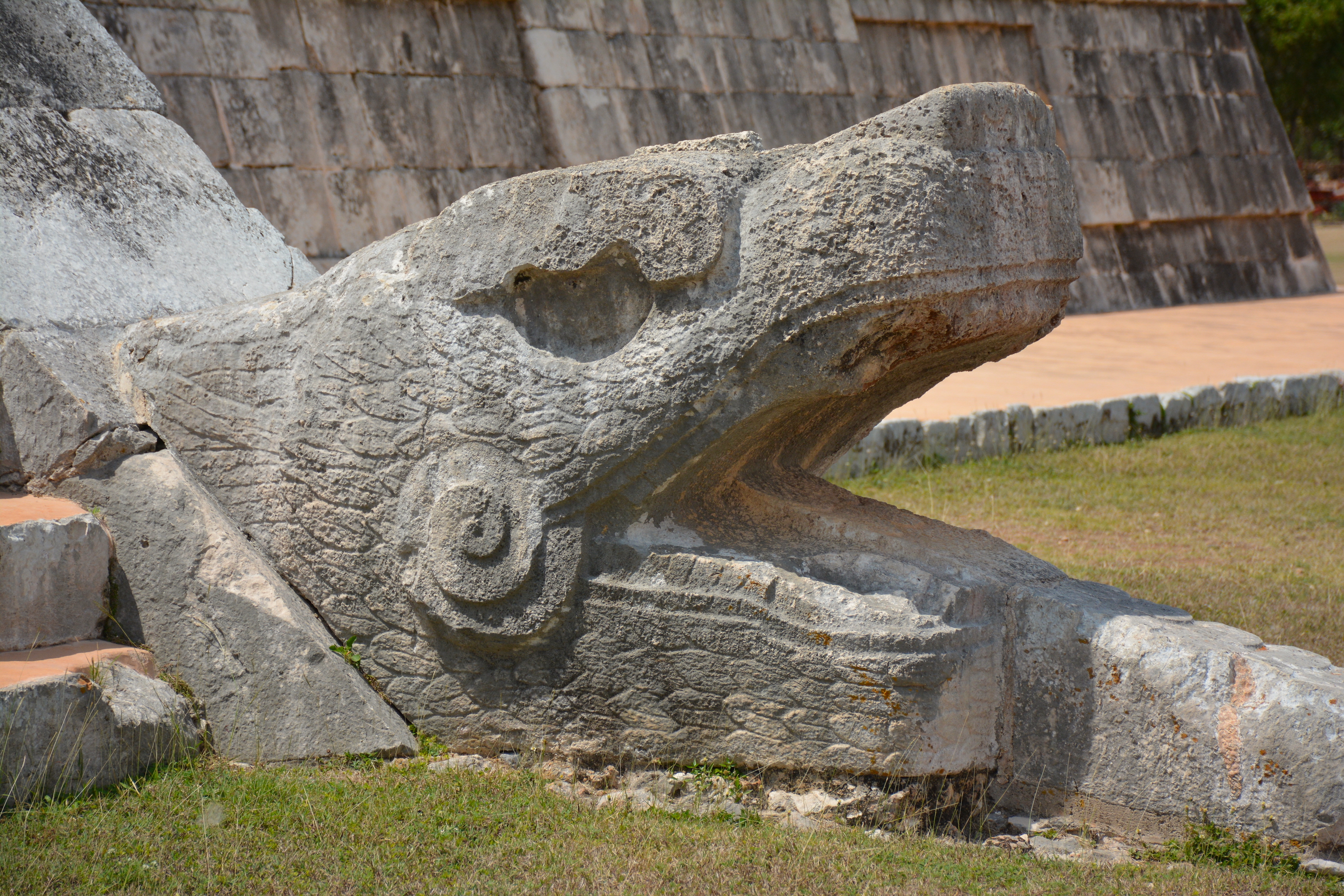Introduction – Exploring Snakes’ Strategies to Find Bird Nests

Snakes have evolved remarkable hunting abilities and unique strategies to locate and access bird nests, offering a fascinating glimpse into the intricate dynamics of the animal kingdom. In this article, we will delve into the anatomy, behavior, and sensory capabilities of snakes that enable them to find bird nests and exploit them as a readily available food source.
Anatomy and Behavior of Snakes – Efficient Hunters
![]()
Snakes possess unique anatomical features and exhibit specific behaviors that make them efficient hunters, especially when it comes to locating and capturing bird nests.
Forked Tongue and Scent Detection
Snakes use their forked tongue to sample the surrounding air for scent particles, collecting odor molecules that are analyzed by the Jacobson’s organ. This specialized sensory organ helps snakes track potential prey, including bird nests, with remarkable precision.
Heat-Sensing Pits and Infrared Detection
Snakes possess heat-sensing pits, located on each side of their face, which allow them to detect infrared radiation emitted by warm-blooded animals like birds. By sensing heat signatures, snakes can identify potential prey and locate bird nests by detecting the warmth of eggs or birds themselves.
Camouflage and Stealth
Snakes are renowned for their exceptional camouflage abilities, blending seamlessly with their surroundings to approach bird nests undetected. Their patience and deliberate movements minimize any disturbance to the nests, increasing their chances of successful hunting.
Climbing and Vibrational Sensitivity
Certain snake species possess impressive climbing abilities, enabling them to access bird nests situated in elevated areas. They can also sense vibrations in the ground, helping them locate hidden or visually challenging bird nests.
Understanding the finely tuned anatomy and behavior of snakes provides insight into their remarkable hunting prowess. Their adaptations, including forked tongues for scent detection, heat-sensing pits for infrared detection, camouflage and stealth, climbing abilities, and vibrational sensitivity, contribute to their success in locating and capturing bird nests. These strategies ensure their survival in diverse ecosystems.
Bird Nests – Types and Locations
![]()
Birds construct nests to provide a safe environment for their eggs and young. These nests vary in type and materials used, including twigs, leaves, grass, feathers, mud, and even spider silk.
Ground Nests
Certain bird species, like plovers and killdeer, build nests directly on the ground. These shallow depressions are often lined with vegetation or pebbles for camouflage and insulation. Ground nests offer easy access to ground food sources and protection from aerial predators.
Tree Nests
Many birds prefer to build nests in trees, utilizing branches, twigs, and natural materials. These nests can range from simple platforms to elaborate structures with multiple chambers. Tree nests provide better visibility and protection from ground-dwelling predators.
Cavity Nests
Some bird species, including woodpeckers and owls, nest in cavities found in tree trunks, branches, or abandoned burrows. Cavity nests offer excellent protection from predators and the elements. Some birds excavate their own cavities, while others use existing ones.
Cliff Nests
Birds like falcons and swifts construct nests on cliffs or rocky ledges. These nests, made of mud, feathers, and other materials, adhere to the rocky surfaces. Cliff nests provide a high vantage point and are less accessible to ground-dwelling predators.
The diversity of bird nests reflects their adaptability to different environments. Each type of nest offers unique advantages, ensuring the survival of bird species in various habitats. Understanding these nests allows us to appreciate the remarkable adaptations and behaviors of birds in creating safe homes for their offspring.
References


Please provide the references for the information used in this section.
How Do Snakes Find Bird Nests? – Types of Cues

Snakes employ various cues to locate bird nests, enhancing their chances of finding and capturing these valuable food sources.
Visual Cues
![]()
Snakes keenly observe birds flying to and from the nest, indicating its presence. They also detect the distinct structure or shape of the nest, such as a platform nestled in branches or a hanging structure suspended from trees.
Auditory Cues
Snakes listen for bird vocalizations, including chirping, squawking, or alarm calls made by nesting birds or their chicks. This auditory acuity allows snakes to pinpoint the direction of these sounds, guiding them toward the nest.
Olfactory Cues
Snakes possess a highly developed sense of smell, detecting the scent of bird droppings, feathers, or the presence of young birds. Their Jacobson’s organ, located in the roof of their mouth, enables them to follow scent trails and identify the proximity of bird nests.
Thermal Cues
![]()
Snakes sense the heat signatures emitted by birds or their nests, perceiving temperature differences between the nest and the surrounding environment. Pit vipers, like rattlesnakes, possess specialized heat-sensing organs called pit organs, aiding in their precise localization of bird nests.
By utilizing visual, auditory, olfactory, and thermal cues, snakes have honed their ability to find bird nests. These cues allow them to capitalize on the diverse sensory information available in their environment, increasing their likelihood of encountering and capturing these valuable food sources.
Scent – How Snakes Use Their Sense of Smell
![]()
Snakes possess an incredible sense of smell that plays a vital role in their ability to locate prey, including bird nests. At the core of their olfactory system is the Jacobson’s organ, also known as the vomeronasal organ, located in the roof of their mouths.
The Jacobson’s organ detects and interprets scents by collecting scent molecules from the environment when a snake flicks its tongue. These molecules then interact with sensory cells in the organ, triggering a neural response that is sent to the brain for analysis.
When it comes to finding bird nests, snakes rely on various scents. They can detect the scent of birds themselves, as well as the scent of their feathers, droppings, and nesting materials. Snakes have the remarkable ability to differentiate between different odors, allowing them to identify specific bird species and locate their nests.
Scent trails left by birds can be a valuable clue for snakes, guiding them towards potential nest locations. Additionally, snakes may track the pheromones left behind by birds, which can indicate the presence of a nest in the vicinity.
In addition to scent, snakes also utilize visual cues to locate bird nests. By observing bird behavior and flight patterns, snakes can narrow down potential nest sites. Their keen sense of smell combined with their visual acuity enhances their hunting efficiency and increases their chances of finding bird nests.
Vision – How Do They See Bird Nests?
![]()
Snakes have a unique visual system that aids them in locating bird nests, despite not having the sharpest eyesight among animals. While their ability to focus on small details, such as a bird nest, is limited, they possess other visual capabilities that help them in their quest.
Visual Acuity and Peripheral Vision
Most snakes have good peripheral vision, allowing them to detect movements and changes in their surroundings. This wide field of vision is advantageous when searching for potential nest locations. Although they might not spot the nest itself, they can observe the behavior of adult birds, such as flight patterns or repeated visits to a specific area. These visual cues provide valuable information to the snakes.
Heat-Sensing Pits
Many snake species possess specialized organs known as heat-sensing pits, located on their faces. These pits enable them to detect infrared radiation emitted by warm-blooded animals, including birds. By perceiving the heat signatures of birds, snakes can identify potential nest locations. This method plays a crucial role in helping snakes locate their prey.
Ambush Tactics and Camouflage
Snakes that prey on bird eggs or nestlings often rely on ambush tactics. They camouflage themselves in vegetation or use their surroundings to remain inconspicuous. By blending in with the environment, snakes can patiently wait for an opportunity to strike when a bird approaches the nest. This strategy leverages their visual capabilities in terms of stealth and patience.
Associative Learning and Visual Cues
Some snake species possess the ability to learn and associate visual cues with potential nest locations. For instance, they may observe the behavior of adult birds and recognize certain flight patterns or repeated visits to specific areas as indications of nest presence. Additionally, snakes might spot the debris or materials used by birds to construct their nests, such as twigs or feathers. These visual cues help snakes narrow down potential nest sites through associative learning.
In conclusion, while snakes may not possess the sharpest eyesight, they utilize their visual capabilities, such as peripheral vision and heat-sensing pits, to locate bird nests. Their ability to observe the behavior of adult birds and associate visual cues with potential nest sites further aids them in their quest for prey. By understanding these visual mechanisms, we gain insights into the fascinating world of snakes and their hunting strategies.
Vibrations: How Snakes Detect and Interpret Their Environment

Snakes possess remarkable abilities to detect and interpret vibrations in their environment, which are crucial for their hunting strategies, particularly when locating bird nests. Let’s explore the sensory organs involved in vibration detection and how snakes utilize this information.
Sensory Organs for Vibrations Detection
Snakes have specialized sensory organs, including pit organs and lateral line systems, which enable them to detect vibrations.
Pit Organs: Heat-Sensitive Vibration Detectors
Pit organs, also known as heat-sensitive pits, play a vital role in detecting vibrations produced by warm-blooded birds. These organs are highly sensitive to temperature changes in the surroundings. When a bird is nearby, the pit organs detect the slight increase in heat emitted by the bird’s body, alerting the snake to its presence.
Lateral Line Systems: Sensing Vibrations in the Air and Water
Some snake species, such as the African vine snake, possess lateral line systems similar to those found in fish. These systems consist of rows of scales adorned with microscopic hair cells. These hair cells can detect vibrations in the air or water, allowing snakes to sense the movements of birds or disturbances in their surroundings.
Sources of Vibrations
Snakes can detect vibrations from various sources, both on the ground and in the air.
Ground Vibrations: Clues from Nest Activity
When birds move around in their nests or nearby branches, they create vibrations that travel through the ground. Snakes, with their ventral scales in direct contact with the ground, can pick up and interpret these vibrations. This provides valuable information about the location and activities of the birds.
Airborne Vibrations: Detecting Disturbances in the Air
Birds produce vibrations in the air when they flap their wings or vocalize. Snakes, equipped with pit organs highly sensitive to disturbances in the air, can detect these airborne vibrations. This ability allows them to pinpoint the presence of birds, even when they are not in direct contact with the ground.
Sensitivity to Frequency and Amplitude

Snakes exhibit remarkable sensitivity to vibrations across a wide range of frequencies and amplitudes. This sensitivity enables them to distinguish between different types of vibrations and interpret the information they provide. By analyzing the frequency and amplitude of the vibrations, snakes can gather crucial details about the size, movement, and behavior of the birds they are targeting.
Understanding how snakes detect and interpret vibrations provides valuable insights into their remarkable hunting abilities and their precision in locating bird nests. By utilizing their pit organs and lateral line systems, snakes can effectively navigate their environment and target potential nests with precision.
Continue reading to explore another important aspect of snake behavior: “Heat: How Snakes Detect and Utilize Heat.”
Conclusion – Final Thoughts

Our exploration of how snakes locate bird nests has revealed their remarkable adaptability and diverse strategies as predators. Through various sensory mechanisms and behaviors, snakes showcase their versatility in fulfilling their predatory needs.
Throughout this article, we highlighted the different cues snakes rely on to find bird nests, including scent, vision, vibrations, and heat detection. By employing these sensory tools, snakes have honed their abilities to pinpoint nest locations and secure valuable resources.
Bird nests hold great significance for snakes, serving as crucial sources of food and reproductive opportunities. These structures provide a consistent supply of eggs and nestlings, sustaining certain snake species. The relationship between snakes and bird nests underscores the intricate dynamics of the predator-prey relationship and the ongoing evolutionary arms race that has shaped their interactions.
While we have gained insights into snake behavior and nest-finding strategies, there are still gaps in our knowledge. Further research is needed to delve deeper into the complexities of this topic and uncover additional facets of snake behavior.
The predator-prey relationship between snakes and birds not only captivates us but also holds broader implications for biodiversity and ecosystem functioning. By appreciating the intricacies of this ecological relationship, we gain a deeper understanding of the delicate balance within natural systems.
For readers intrigued by snakes and their interactions with bird nests, we encourage further exploration. Delve into the vast array of resources available, ranging from books and documentaries to scientific papers. By expanding our knowledge, we continue to unravel the mysteries surrounding these fascinating creatures and the captivating world they inhabit.
References
[Include the list of references here.]
Sources of Information
![]()
When writing about how snakes find bird nests, it is crucial to support your claims with reliable sources. Here are potential sources of information for this topic:
-
Scientific research papers: Explore studies conducted by herpetologists, wildlife biologists, or experts specializing in snake behavior and ecology. These papers offer in-depth insights into hunting strategies and sensory abilities of snakes.
-
Books and field guides: Refer to reputable books and field guides written by renowned experts in herpetology or ornithology. These sources provide valuable information on snake behavior and abilities in detecting bird nests.
-
Nature documentaries: Watch documentaries focusing on reptiles or wildlife behavior, as they provide visual examples and explanations of how snakes locate bird nests. Look for documentaries produced by reputable wildlife filmmakers or organizations.
-
Wildlife conservation organizations: Visit the websites and publications of organizations dedicated to wildlife conservation, such as the World Wildlife Fund (WWF) or the National Audubon Society. These sources often contain informative articles or reports on snake behavior and their interactions with bird nests.
-
Online databases and academic journals: Access online databases like Google Scholar, JSTOR, or PubMed to find academic articles, research papers, or case studies related to snakes and their interactions with bird nests.
-
Interviews with experts: Consider reaching out to herpetologists, wildlife biologists, or snake researchers for interviews or quotes. Their firsthand knowledge and expertise can add credibility to your article.
By incorporating information from these diverse and reliable sources, you ensure that your article on how snakes find bird nests is well-supported and informative.
Frequently Asked Questions
How do snakes locate bird nests?
Snakes utilize various cues to locate bird nests. They rely on visual cues, such as observing bird behavior and nest structures. They also use auditory cues by listening for bird vocalizations near nest sites. Snakes have a highly developed sense of smell and can detect the scent of birds, their droppings, and nesting materials. Additionally, snakes can sense heat signatures using their specialized heat-sensing pits, helping them locate warm-blooded birds and their nests.
What are the sensory capabilities of snakes that aid in finding bird nests?
Snakes possess several sensory capabilities that aid in finding bird nests. They have a forked tongue and the Jacobson’s organ, which helps them detect scent particles in the air. Snakes also have heat-sensing pits located on their faces, allowing them to detect infrared radiation emitted by warm-blooded animals like birds. Their visual acuity and peripheral vision help them observe bird behavior and detect nest structures. Additionally, some snake species can sense vibrations through their pit organs and lateral line systems, aiding in locating bird nests.
What types of cues do snakes rely on to find bird nests?
Snakes rely on visual, auditory, olfactory, and thermal cues to find bird nests. Visual cues include observing bird flight patterns and the distinct structure of nests. Auditory cues involve listening for bird vocalizations, including chirping or alarm calls. Olfactory cues rely on the snake’s sense of smell to detect the scent of birds, their droppings, and nesting materials. Thermal cues involve sensing heat signatures emitted by birds or their nests.
How do snakes use their sense of smell to find bird nests?
Snakes use their sense of smell to find bird nests by detecting the scent of birds, their feathers, droppings, and nesting materials. They flick their forked tongues to sample the surrounding air, collecting scent molecules. These molecules are then analyzed by the Jacobson’s organ, located in the roof of

Leave a Reply